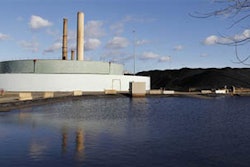TOKYO (AP) -- Japan selected the Lockheed Martin F-35 stealth fighter Tuesday to replace aging jets in its air force and bolster its defense capability amid regional uncertainty.
"Our decision on the next generation fighters was an extremely important one for our national security, and we wanted to acquire fighters with solid capability," Defense Minister Yasuo Ichikawa said at a news conference.
The announcement comes amid fresh concerns about regional stability following the death of North Korean leader Kim Jong Il. The impoverished country is known to be pursuing nuclear weapons, and neighbors worry about the potential fallout from political maneuvering in Pyongyang.
"The security environment surrounding Japan remains unstable and uncertain in many ways, and it is crucial to ensure peace and independence of our country," Ichikawa said.
Japan is buying 42 of the aircraft under a multiyear deal, and has budgeted the cost of the first four fighters next fiscal year, which starts in April, said Noriyuki Shikata, deputy Cabinet secretary for public relations.
Lockheed gave the average price per plane as $65 million. Details including exact timing of the deliveries, final price tag and quantities per year have yet to be finalized.
Japan wrestled for years over whether to buy the F-35, Boeing F-18 or the Eurofighter Typhoon, made by a consortium of European companies.
The F-35, also called the Joint Strike Fighter, is the Pentagon's biggest weapons procurement program -- costing $238 billion -- and has support from allies including Britain, Australia, Canada, Israel and several European nations. It is to be used by the U.S. Air Force, Marines and Navy.
The decision is going to deeply impact security throughout the region for decades to come. Washington is Tokyo's main ally, and roughly 50,000 U.S. troops are stationed in Japan under a security pact. Japan's air force must work closely with its American counterpart, and using the same or similar equipment makes that easier.
Japan's main concerns are China and Russia, with which it has long-standing territorial disputes.
China, whose military has been growing more capable and assertive, recently rolled out its next-generation stealth fighter, the much-touted Chengdu J-20. Though it may be years away from actual operations, it is seen as a rival to the best U.S. fighters and far superior to what Japan now has.
Winning the Japan contract marks a major victory for Lockheed Martin, which is aggressively pushing the F-35 abroad. Though the program has been criticized for cost overruns and delays, the company says that eventually several thousand could be produced.
Japan -- with 362 fighter jets, mostly F-15s, F-4s and F-2s -- is already one of the top air powers in the region. But planners have long been concerned by the increasing age and expense of maintaining the fleet, along with Japan's ability to match the improving air capabilities of its neighbors.
The new fighters would replace the F-4s.
To further sweeten the deal, Lockheed promised Japan a share of the assembly and production of the aircraft, which is important to local producers.
Japanese officials said they took into account cost, performance and the inclusion of Japanese companies in the manufacturing process.
"Lockheed Martin is honored by the selection," said Dave Scott, the company's director of F-35 international business development based in Fort Worth, Texas. "We're excited about working with Japanese industry to manufacture and deliver the F-35 for the Japan Air Self-Defense Force."
Associated Press writers Eric Talmadge and Mari Yamaguchi contributed to this report.


















